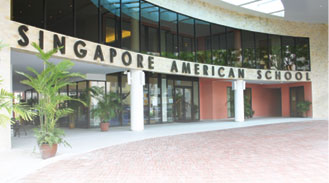 Nearly a year into his stint as the 12th Superintendent of the Singapore American School (SAS), Dr Chip Kimball speaks enthusiastically about his mission for change.
Nearly a year into his stint as the 12th Superintendent of the Singapore American School (SAS), Dr Chip Kimball speaks enthusiastically about his mission for change.
Dr Kimball, who was formerly the Superintendent of Lake Washington School District in Redmond, Washington, said, "The (SAS) Board has asked me to evaluate the viability of strategic growth — is there a market and demand for it? How can we accommodate that and include the creation of innovative programmes for our students? We spent time with the High School this year looking at schools around the globe figuring what innovative programmes there are that we do not know of, and we will do the same with our Elementary and Middle Schools next year to look at innovation and figure out what it is we want to create over the next five years."
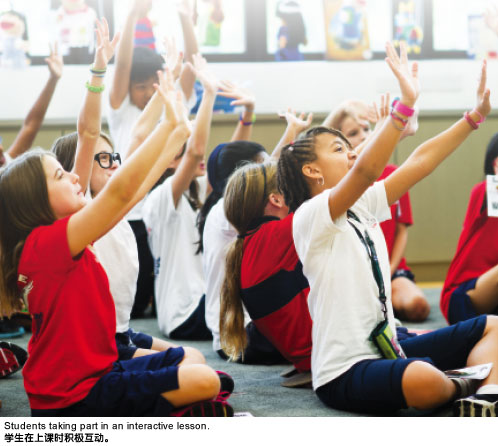 What he wants to create is a breed of graduates who can compete and win in the global talent pool. What he wants to create is a breed of graduates who can compete and win in the global talent pool.
Population Diversity
SAS itself has a diverse population. Within the student body, nearly 70 per cent are United States (US) citizens. The other 30 per cent come from as many as 50 different countries. Mixing with their peers therefore gives students the opportunity to interact with a wide variety of ethnicities on a daily basis, which High School Principal, Dr Tim Stuart, believes gives them a good grounding for living in a shrinking world.
At SAS, admission relies on a variety of factors. Chief among them is the professional belief that a student will thrive in an environment of academic challenge, rapid pace and diverse experiences with the support of knowledgeable international educators and caring mentors. SAS was established to support US citizens and non-US citizens working for US companies. It also serves over 200 Singaporean students at present.
"If we believe that we have an academic programme that benefits a child, and the potential student can contribute meaningfully to our community, we will move toward acceptance as space becomes available.
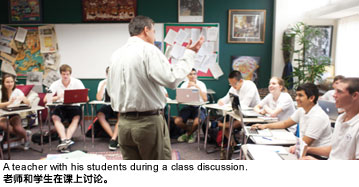 "Considering that we are really a broad community school, we accept a very wide variety of students. We meet the need for personal excellence displayed by highly intelligent students who are very advanced academically. And, we meet that same need for students who, at entry level, may struggle or demonstrate learning challenges and needs. We believe each will find niche areas of personal excellence and contribution during their time at SAS and beyond," said Dr Stuart. "Considering that we are really a broad community school, we accept a very wide variety of students. We meet the need for personal excellence displayed by highly intelligent students who are very advanced academically. And, we meet that same need for students who, at entry level, may struggle or demonstrate learning challenges and needs. We believe each will find niche areas of personal excellence and contribution during their time at SAS and beyond," said Dr Stuart.
The US Education Model
As an American school with an international perspective, SAS faithfully follows the US education model and while there may be similarities between the local and the American systems, they are also clearly very different.
"If I were to identify the biggest difference between the Singaporean model and the US model, the greatest strength of the American model is that it is innately, if done correctly, designed to never give up on a child," explained Dr Stuart, who has been working in international schools for 16 years now. "There is always a chance for children to learn, to learn more, to do better, to grow at different rates, to learn at different speeds, to mature at different ages, and the American system doesn't put any child in a box that is unrecoverable."
Generally, the US paradigm is recognised as being very concerned with educating the whole child and taking a holistic approach to education via the liberal arts.
To that end, there is no sorting mechanism or streaming within the system, and neither is there at SAS. Different students, even within the same grade, take subjects at different levels and take tests based on their differing abilities. For example, students can split a year-long Mathematics course over two years, or choose to study geometry at the age of 12 or 15 or whenever they are ready. The university-like system allows students the room to advance to different levels at different ages, so even 15-year-olds can study high-level calculus if they are ready.
"At the end of the day, it's all based on their abilities, their individual aptitude and their readiness. If you go back to the belief that we're not here to sort kids, the only reason a school would offer one level of test questions is so you can understand who makes it and who doesn't. But since we don't believe that that's our ideal educational paradigm, our primary objective is to test that every child is learning. Hence, if a student is at a lower level in one subject ability, we will offer a course of study that will help and challenge him, and if he displays exceptional prowess in another subject, he will be put at a much higher level than his peers even though they are all in the same grade."
SAS faithfully replicates the resources one might find in an exceptional public high school in the US. However, if there is a way in which SAS does not fit the usual mould, it would be in the sheer number of courses — and particularly of specialised and higher level courses — that it is able to offer. And this wealth of provision stems from the atypical strength and depth of its staff and the extra needs brought about by its international perspective and population.
"It's all about trying to find the right level of challenge and rigour that will move individuals from one step to the next and continue to grow, because education is a lifelong growth journey. And understanding this will help us to target success in the 21st century, where change is rapid, and where there are therefore demands for added flexibility and self-awareness," Dr Stuart said.
Fulfilling Potential the American Way
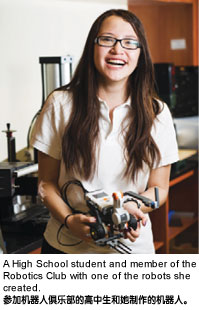 To further encourage the growth of students, Dr Kimball is also supportive of the idea of tailor-making the educational experience for individuals. However, the challenge lies in the availability of resources and the scale in which this can be done. A way to overcome this is through technology. As an example, Dr Kimball talked about the Khan Academy, a non-profit organisation which provides free online world-class education. To further encourage the growth of students, Dr Kimball is also supportive of the idea of tailor-making the educational experience for individuals. However, the challenge lies in the availability of resources and the scale in which this can be done. A way to overcome this is through technology. As an example, Dr Kimball talked about the Khan Academy, a non-profit organisation which provides free online world-class education.
"If some lessons are available on the Khan Academy, it frees up teaching time to make the lessons more individualised. If you harness the expertise of people and resources via technology, then some of the work in education can be tailor-made. However, there are a number of structures that need to be addressed in order to do that," he said.
The structures referred to are the often unchallenged things like the length of the school year, the school day, the number of contact hours and the number of students in a classroom, all of which Dr Kimball calls artificial constraints.
"We need to remove ourselves from those constraints, and think about how can we serve students, harness technology, manpower and resources and do it differently. We need to address how we run our school calendar and classes, how teacher time is allocated, how we access technology, and consider poor communities where access to technology is more challenging. There are obstacles, but there is a solution and we have to do it in a way that actually costs less money."
Preparing for the Future
"An ongoing discussion concerns 21st century learning — namely, how do educators inculcate the relevant soft skills such as effective communication, and how do schools get their students to develop critical thinking, data analysis, collaboration, creativity and most importantly, problem solving skills," said Dr Stuart.
The School's priority is to home in on developing 21st century skills — communication, collaboration, problem solving, and a global mindset.
Students will also need the basic skills of reading and writing well together with a strong foundation in Mathematics and Science. Thereafter, they will need to combine basic and 21st century skills and learn to apply them to different contexts or to contexts which do not exist yet.
"How do you build the adaptability, resilience, and hard work required and do it in a way that also teaches them to work with others? Because if you create a culture where it's only about being the individual contributor and the individual winner, then that individual will lose. What we know from good organisations and great products is that it always takes a team. So we have to be collaborators and competitors at the same time and understand how to do that well. At SAS we do that by providing a lot of different opportunities and by helping students understand their giftedness and their passions," Dr Kimball elaborated.
As such, the future SAS is one where experiences are more meaningful, more deeply embedded in work and where the culture is more global. For example, students at SAS might spend a semester in China, India, Europe, or the US doing something they're identified as their interest or passion, where they can get real world experiences and solve somebody else's problems with a team.
Drawing Inspiration From Others
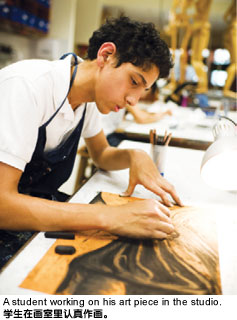 Much can also be learnt from the Singapore system. Having been in Singapore since July 2012, Dr Kimball is interested in the local education system and how SAS and the Ministry of Education (MOE) can collaborate. One of the things he is struck by is how educators and policymakers in Singapore and the US are equally keen to improve their respective systems. Much can also be learnt from the Singapore system. Having been in Singapore since July 2012, Dr Kimball is interested in the local education system and how SAS and the Ministry of Education (MOE) can collaborate. One of the things he is struck by is how educators and policymakers in Singapore and the US are equally keen to improve their respective systems.
"I'm impressed with the results and with some of the things Singapore has been able to accomplish, but some of the methodology is inconsistent with what my beliefs are regarding what good education looks like. What I want to do is learn from the things the Singapore system does very well, but not abandon our values around the whole child, around a multi-disciplinary approach to the problems, problem solving and future thinking. Those, including innovation, are what we hold on to pretty tightly. Those are areas that Singapore struggles with a bit.
"One of the things I appreciate about what's happening in Singapore as opposed to what's happening in the US is that in Singapore there's a cultural priority that is put on education, and in the US, in my opinion, we're lost our way a little bit. It is not as much of a cultural national priority in the US as it is in Singapore. And part of that is because we're gotten a little complacent.
"I'm very interested in exploring these issues together with MOE because they want to know what we do and why we do it, what works and what doesn't, and we're curious about what they do as well. When you have two partners that are curious it makes for a perfect partnership," Dr Kimball said.
Through past interactions and dialogues, Dr Stuart has come to the significant realisation that the global bearers of education are starting to blend.
"We're still wrestling with the same things, despite coming from entirely disparate paradigms. I think then, we're all coming together, trying to figure out how to get kids to be able to apply learning. This is an area that I don't think Singapore has done a very good job in, and I don't think the US has done a very good job in either, but we're going to get somewhere by meeting in the middle.
"That's where the future of education is going to be at. Schools all over the world, starting from here, will introduce a blended form of teaching rigorous content and concepts and then providing students with the necessary platforms to apply that learning in constructive and authentic ways. This is the missing link both in the Singapore and US systems.
"And that is why I believe that SAS is creating the world's future leaders, because there is no better place or platform for an American child to understand Asia and all of its culture and dynamics than right here in Singapore. By the same token, for Singaporean students to be ultimately successful in a global way, they are going to have to understand the mechanics of practical intelligence: how to think out of the box and act creatively to achieve maximum positive effect," Dr Stuart said.
A Problem-solving Approach to Improving Education
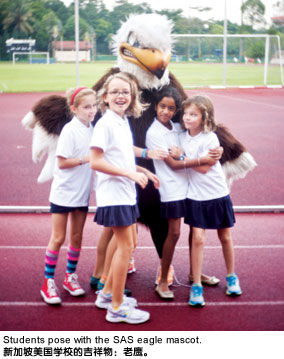 SAS has thus asked Dr Kimball to help identify the gaps and lead the change. SAS has thus asked Dr Kimball to help identify the gaps and lead the change.
"Identifying a problem is usually more complex than most people think. There is never a single problem, and consequently, never a single solution. Instead, there is a combination of problems — school size, school system, teacher quality et cetera — which is what makes schooling so challenging. There is no single solution to the system that you can scale across the system, state or nation. When I came to SAS I began to try to identify the issues it is facing. Is it teacher quality, size, money, governance, culture, curriculum, or technology?"
In order to correctly identify the problems, the first thing Dr Kimball does is to assess the environment. He looks at the academic achievement and the thinking skills of the students, whether they are fulfilling their potential and if the environment is conducive.
"Assessment is a big question — what we are assessing and how do we know. Then I look at cultural and quality components. There's a series of measures that we think about," he said.
After the environmental assessment and problem identification has taken place the vision can begin to be articulated.
"The first way that you approach the problem is by painting a direction of where you want to go. You have to have a reason why. If people do not have a compelling reason why they should change, they will not change. Paint a vision, and that vision is often developed from what your clientele, in our case, parents and students, want for their future. If you can present them with a compelling case, then you have to build the structure that supports that.
"Next you have to build a capacity in the organisation to change — educating and giving them opportunities for growth. So you're building capacity and creating incentives for them to move to that new place. And sometimes it's carrots — incentives, sometimes it's sticks — consequences. You balance those very carefully, and although it's always more healthy to have more carrot than stick, in almost all cases you need a bit of both," Dr Kimball said.
Then comes the need to put structures, processes and policies in place to effect the change.
"You have to have all of these, and that's what we're trying to do here. We have a community that is very supportive of educational reforms, of being progressive, relevant and connected to what's happening to the world economy. Therefore the time is ripe for us to effect tremendous change. One of our obstacles is that we're also been very successful, and success can be an obstacle because people are likely to say, 'Why change? Look at how good we are.' So we have to provide a really compelling case to change and we're working on that."
Leadership Necessary to Implement Change
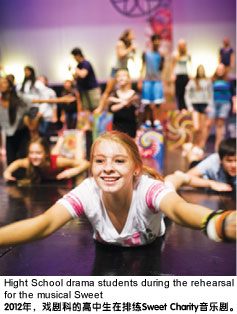 Dr Kimball is confident that much can be done, especially since people of the information age are primed for change and innovation. To that end, he is mindful that creating the right environment where people feel free to emulate is key. Dr Kimball is confident that much can be done, especially since people of the information age are primed for change and innovation. To that end, he is mindful that creating the right environment where people feel free to emulate is key.
"Often we feel very constrained and almost beaten down by bureaucracy, leadership, money. It's a leadership question, and sometimes we just don't create good environments for people to innovate. Clayton Christensen, who wrote the book Disrupting Class, used the private sector as an example and attempted to apply it to the education sector. He said innovation rarely, if ever, happens inside an institution. You have to innovate outside the institution and re-insert it into the system because bureaucracies are created to protect themselves and I am trying here to prove that wrong.
"I'm trying to make a statement and to say that if the leadership insists that innovation is a core requirement then we can innovate. And there are a few places where it has been done — the survival of high-tech companies, for instance, is necessitated by innovation. Unfortunately, educational institutions have survived for 200 years by not being innovative. To break that mould and to foster innovation I'm telling our teachers, 'Not only is it okay for you to innovate, but you're going to be rewarded if you innovate.' And it's all about systems of rewards — internally, culturally and even monetarily," Dr Kimball concluded.
|
Dr Chip Kimball — Leading by Example
Dr Kimball's interest in pushing the envelope and innovating goes back to when he was in his second year of teaching as a Biology teacher.
"I was not very traditional from the very beginning. In my second year of teaching, I created an integrated Biology-English curriculum with another colleague. We were one out of only twenty in the US to get a large grant for this integrated Biology-English curriculum which was very out-of-the box, and we got the support of the administrative system of the school. I'm a fighter, and have fought the system over and over again," said Dr Kimball.
He came to Singapore for two reasons. "The first reason is that when I was in the US I was standing on the podium talking about how we could be globally competitive, and I felt that most American educators had no idea what competing globally looks or feels like. There's a cultural competency that is required in order to be competitive and effective in a global workplace. And I was afraid I didn't get it either. So in order for me to be the leader I believe I can be, I wanted to live in Asia so I could truly understand how to be culturally competent as it relates to leadership in education."
The second reason is that in the US public system, there are constraints such as state and federal bureaucracy which limits innovation. By coming to Singapore, specifically SAS, Dr Kimball hopes to test his theory of change and innovation in a place where limitations are removed. He hopes to achieve a good outcome, and thereafter bring it back to the US to do it on a larger scale.
|
|